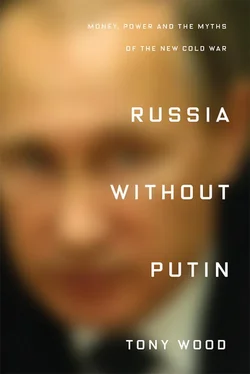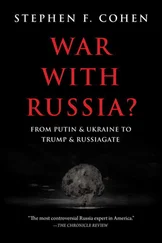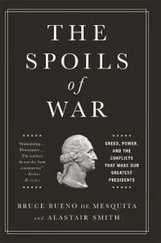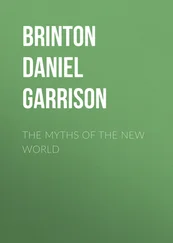In Russia as elsewhere, such trends imply a formidable rise in the ‘dependency ratio’, requiring more and more of the resources generated by a shrinking workforce to be deployed in caring for pensioners. In much of the developed world, these looming pension obligations – the term ‘overhang’ is frequently used – have been used to justify increases in the retirement age. But in Russia there are powerful moral arguments against such moves: shorter life expectancy and higher mortality rates than in the West or Japan, say, mean that the Russian pension system is already heavily subsidized by men and women who do not survive to retirement age. Shifting back the date at which they can claim their pensions would compound the injustice of working lives already too harsh to last as long as they should. While Russian demographic trends in many ways echo those of the industrialized world, then, there are differences that seem likely to make the politics of the ageing society particularly sharp-edged there – perhaps demanding an even more thorough rethinking of the country’s economic model.
The only thing that can mitigate the effects of a contracting and ageing population is a substantial inflow of migrants. According to a 2006 study led by Anatoly Vishnevsky, Russia’s leading demographer, in order simply to maintain Russia’s population at its present level, an annual net migration of around 900,000 people would be required until 2024, rising to an average of more than 1.2 million migrants a year until 2050. Accurate figures are hard to come by, but at present migrants in Russia probably number around 12 million, something like 8 or 9 per cent of the total population. Given Russia’s low birth rates, if the population does stay steady, an increasing proportion of it will be recent immigrants: according to Vishnevsky’s team, as much as 15 per cent by 2025, and 35 per cent by 2050. {19} 19 Vishnevsky et al., Demograficheskaia modernizatsiia Rossii , pp. 502, Table 22.3, 504 Table 22.5.
At present, most migrants to Russia come from former Soviet republics – the lion’s share from Tajikistan, Uzbekistan and Kyrgyzstan. If anything like the influx required to offset natural population decline materializes, it will rapidly alter Russia’s demographic make-up. Migrant workers have already been subjected to chauvinist harassment and violence, and one could be forgiven for fearing there is worse to come, given the tide of empowerment and impunity the far-right has been riding in recent years. It is likely, too, that what is already an ethnically segmented workforce will settle into a more permanent ethnicized social hierarchy, like those of other post-imperial societies such as France or Britain. But at the same time, the very processes and experiences of migration might just propel a rethinking – however halting or partial – of the idea of Russianness itself, giving a stronger emphasis to civic components over ethnic ones, and allowing that idea to inhabit a wider range of forms and meanings.
Of course, Russia’s ethnic composition is already hugely varied: the country is home to more than 150 different officially recognized groups, from the 5 million-strong Tatars, descendants of the Mongol armies, to the Nganasans of the Arctic, who number barely 900, and from the myriad mountain peoples of the North Caucasus, predominantly Muslims, to the shamanic Udege of the Amur River basin, among scores of others. But taken together, these groups comprise only a small part of the total: Russians have always been the dominant group within their multi-ethnic empire, and today account for 80 per cent of the population. Even with substantial immigration, it will be some time before ethnic Russians lose their overall majority status. But since fertility rates among non-ethnic Russians are at present higher than among ethnic Russians, the demographic preponderance of ethnic Russians will visibly be eroded soon enough, regardless of migratory flows. The social consequences of this demographic tilt are hard to predict. Politically, its effects bleed into those of another critical matter that will confront Russia in the years to come: the ‘national question’, which beset the USSR in its final days, and which reared its head once more during the Ukraine crisis.
Nominally, Russia today is a federation, comprising eighty-three territorial ‘subjects’ – plus two more since 2014, with the Republic of Crimea and the city of Sevastopol – each of which possesses its own constitution, government, parliament and flag. On paper, these entities have many of the attributes of statehood, and only delegate certain powers to the federal centre in Moscow. But the reality is very different: in practice, Russia is a highly centralized polity, and the country’s supposedly federal subunits are little more than administrative divisions within a clear hierarchy – what Putin himself famously called a ‘vertical of power’.
This gap between federal form and centralizing substance was present during the Soviet period: the USSR was constitutionally a federation of equally sovereign components, but in reality all major decisions and even many minor ones were made in Moscow. In the early 1990s, however, many of Russia’s own subunits gained effective sovereignty, having been encouraged by Yeltsin to ‘take as much as they could swallow’. This led to prolonged tussles between the federal centre and regional elites. By 1994, Yeltsin managed to claw back the advantages Moscow had yielded (with the single exception of Chechnya, which refused to sign a new Federal Treaty, having already declared full independence).
Putin carried on and completed the centralization Yeltsin had begun, imposing his ‘vertical of power’ through administrative reorganization – adding a layer of federal plenipotentiaries and eliminating elections for regional governors – and by tightening the purse strings: in 2001, tax revenues were split roughly fifty-fifty between Moscow and the regional governments, but by 2008 the federal government’s share had risen to 70 per cent. The effect of this was to reinforce and widen the gap between federal form and content. In the words of political scientist Brian Taylor, Putin ‘saved Russian federalism by killing it’. {20} 20 Brian Taylor, State Building in Putin’s Russia , Cambridge 2011, p. 113; for figures on tax revenues, see p. 147.
Chechnya’s bid for independence marked a critical turning point in this process: the war Yeltsin unleashed in that republic in 1994–96 was supposed to ‘restore constitutional order’ by bombing the Chechens back into line. The deaths of tens of thousands of Chechnya’s civilians and the flattening of its cities were intended as an example, showing the rest of Russia’s federal subunits what would happen to those who made further breakaway attempts. Here again Putin completed Yeltsin’s work, bringing Chechnya back into the federal fold by imposing on its beaten population a dictatorship loyal to the Kremlin, and in particular to Putin personally.
Yet the force of the example was undermined only a few years later, when after the 2008 war with Georgia, Russia recognized the independence of South Ossetia and Abkhazia. Whatever was left of Russia’s commitment to the idea of territorial integrity vanished completely during the Ukraine crisis, when it first annexed Crimea after a hasty referendum supervised by 20,000 Russian troops, and then backed secessionist rebels in the Donbass, while making intermittent noises about absorbing eastern Ukraine’s Russian-speaking territories. It seems unlikely that this second annexation was ever seriously considered: the Kremlin was instead floating the idea of reconstituting ‘Novorossiia’ in order to push the West to back down. The attempt clearly failed; but at the same time, it opened up once more the Pandora’s box of separatisms Russia had apparently fought so hard to keep shut since the early 1990s.
Читать дальше












